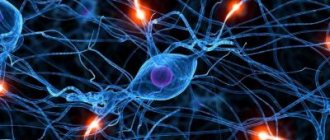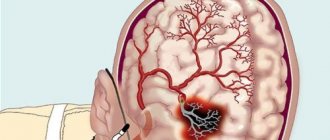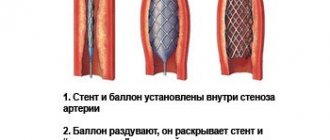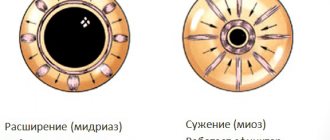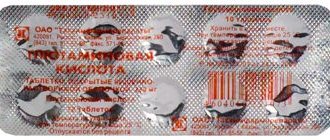Pyramidal insufficiency syndrome, which can occur in both children and adults, is a complex of motor disorders that leads to a disorder of muscle reflexes and a mismatch in muscle function. The reason is damage to the pathways going from the cerebral cortex to the effector organs. This happens after birth injuries, infections of the central nervous system and other diseases.
How does it arise?
Pyramidal insufficiency is a syndrome, not a specific disease, although many doctors tend to perceive it as a disease and make a diagnosis. Pyramidal insufficiency is not included in the worldwide list of diagnoses. In medicine they tend to refer to it as central paralysis or paresis. The pathology consists of a disorder localized in the pyramidal cells of the fifth layer of the cerebral cortex.
Pyramidal cells (Bertz cells, named after their discoverer) have fibers that transmit impulses to different parts of the body. If cell damage occurs, a condition close to paralysis or paresis occurs, and the reflex activity of the body is disrupted.
In children, pyramidal insufficiency develops due to hypoxia, birth injuries or intrauterine developmental anomalies. In adults, the causes of the development of the disease differ:
- inflammation in the brain (meningitis, encephalitis and other infections);
- changes in blood circulation in the brain (stroke);
- skull injuries that provoke disturbances in the transmission of nerve impulses;
- benign and oncological tumors.
In adults, pyramidal insufficiency is an acquired disease that requires treatment of the underlying cause along with symptom management.
How to recognize?
Pyramidal insufficiency in adults can be detected based on modern diagnostic equipment and examination by a neurologist. In order for the doctor to obtain a complete picture of the disease, the patient must undergo:
- magnetic resonance imaging (prescribed if there are seizures or suspected epilepsy);
- computed tomography of the brain;
- electroencephalography - allows you to identify hidden convulsions, which often occur during sleep and do not allow diagnosing the disease when examining the patient;
- electromyography – examines the electrical muscle potential;
- Ultrasound of the brain - allows you to identify tumor processes.
Outwardly noticeable symptoms, as well as conditions that are easily diagnosed upon examination by a doctor, will help indicate pyramidal insufficiency in adults:
- hypertonicity of the muscles of the limbs;
- hypertension;
- partial or complete paralysis of individual parts of the body;
- convulsions;
- decreased reflex activity;
- sometimes - obesity, sexual dysfunction, if the hylothalamic-pituitary system is affected.
It is impossible to talk about pyramidal insufficiency solely on the basis of a medical examination. All tests are required. Then the information obtained will enable the doctor to talk about a specific disease.
Clinical picture and diagnostic methods
To identify pyramidal syndrome in adults, a simple examination by a neurologist is not enough. The patient must undergo a series of modern diagnostic procedures. To obtain comprehensive information about the patient’s health status, the neurologist will need the results of the following examinations:
- (prescribed if there is or suspicion of);
- which helps to trace hidden seizures (in most cases they occur during sleep and therefore cannot be detected during an examination by a neurologist);
- electromyography
, which allows you to determine the electrical potential of muscles; - (if tumor formations are suspected).
Pyramidal insufficiency in adulthood also manifests itself in more noticeable symptoms that can be detected during a medical examination:
- hypertension;
- increased arms and legs;
- full or partial of different parts of the body;
- violations of reflex activity, in particular, a decrease in its speed;
- in some cases, especially if the damage has occurred to the hypothalamic-pituitary system, sexual dysfunction and increased body weight may be observed.
Treatment
In adults, therapy for pyramidal insufficiency resembles that for children. But in children, the causes of the disease are hidden. In adults, they are easier to diagnose, since the syndrome is often a consequence of a stroke, injury or infectious disease of the brain.
Primary therapy is aimed at eliminating the cause. Infectious diseases can be treated with medications (antiviral medications, antibiotics); in parallel, the doctor prescribes symptomatic therapy.
For skull injuries or tumors in adults, surgical intervention is not necessary. In case of injury, the integrity of the skull is restored, damage that negatively affects the vital functions of the body is eliminated. After the patient recovers, the symptoms of pyramidal insufficiency in adults begin to be eliminated.
Therapy for the disease in adults involves a regimen of increased physical activity. Physical therapy classes, long walks, swimming, and sports are recommended in the absence of contraindications. If you perform individual exercises, it is important to do them while exhaling. This measure contributes to the correct distribution of muscle load. Walking should be done at a moderate pace, without overexertion. As soon as a clinic client feels tired and overworked, classes should be stopped.
Relaxing massage and physiotherapy give results. If necessary, the patient is prescribed to walk in orthopedic shoes. Warm baths, paraffin therapy (heat paraffin to a liquid state and apply to the affected limbs), electrophoresis are recommended.
With properly selected treatment, pyramidal insufficiency in adults recedes and rarely manifests itself in the form of paralysis. For therapy to be successful, you must choose the right clinic and qualified doctor. Our specialists will provide assistance and prevent the development of the disease.
Ballerina's symptom, walking on tiptoes or on tiptoes, equinus planting of the feet - all these are names of one pathology - pyramidal insufficiency syndrome. The disorder can be caused by a large number of reasons, but is always accompanied by moderate/severe muscle dystonia with hypertonicity of the foot and leg. Pyramidal insufficiency with bilateral dystonia is usually observed in newborns and children in the first year of life, and is less commonly diagnosed in children 2-3 years of age.
Complications
Treatment of pyramidal insufficiency in children should be carried out. But you should be careful when taking medications. Sometimes a massage is enough for the tone to return to normal.
It is impossible to assume that the baby will “outgrow” the disease or that it will go away on its own. Lack of therapy for 2-3 years will provoke an incorrect distribution of the load on the muscles and a shift in the center of gravity.
These complications are the cause of the appearance:
- diseases of the legs, joints;
- back problems;
- osteochondrosis, curvature of the spine;
- displacement of vertebral discs;
- headache;
- pain in the neck area.
Is there hope for parents whose children are affected by pyramidal insufficiency? This is not a death sentence, and this condition can be easily treated in childhood. Doctors may diagnose pyramidal insufficiency, while the term refers to a syndrome, or group of symptoms. For treatment, one should look for the true cause and carry out complex therapy.
Why does pyramidal insufficiency occur?
The medulla oblongata is responsible for complex reflexes. It is part of the brain and connects the latter to the spinal cord. The organ consists of anatomical cells - pyramids. Hence the name - pyramidal.
When these cells are damaged, movement disorders occur. It is worth noting that in medicine there is no diagnosis of “pyramidal, or pyramidal, insufficiency”. However, it is given to many children and is not always justified.
The cause of the development of pathology in a child is perinatal mechanical or ischemic injury to the cervical spinal cord. When the blood circulation of the cervical thickening and the brain stem is disrupted, a gross deviation of the muscle tone of the flexors in the limbs is formed.
The severity depends on the severity of the lesion. The arms become stiff, and with more widespread ischemia, a disturbance is observed in the legs - when the baby is placed on his legs, he firmly rests on his toes (distal parts of the foot).
Why pyramidal?
The medulla oblongata is one of the five sections of the brain.
It connects the brain to the spinal cord and is responsible for performing simple and complex reflexes. The medulla oblongata consists of a large number of anatomical cells - pyramids, hence the name - pyramidal. And if at least one part of the pyramidal cells fails, then a violation of coordination of movements will appear.
The medulla oblongata, whose cells are called “pyramids,” is responsible for complex reflexes in the human body. It is as a result of any disturbances in this part of the brain that the so-called pyramidal insufficiency occurs, i.e., disturbances in the adequacy of reflexes. The most common causes of deficiency are:
- congenital pathologies of the NS,
- birth injuries,
- fetal hypoxia during pregnancy or childbirth,
- disruption of the production or outflow of cerebrospinal fluid (cerebrospinal fluid),
- infectious diseases,
- abscesses,
- inflammation of the meninges that cause hydrocephalus (meningitis, encephalitis),
- tumors
- cerebral hemorrhages.
Pyramidal insufficiency syndrome is by and large not a separate disease. This is a secondary condition caused by an underlying disease of the nervous system. It is worth noting that in infancy (2-3 months) tacking of the legs and hypertonicity of the lower leg muscles is not a terrible pathology. As the nervous system ages and matures, this condition usually goes away.
Symptoms and signs
Key symptoms of pyramidal insufficiency:
- Trembling chin;
- Hand tremors;
- Throwing the head back;
- Poor grasp reflex;
- Difficulty holding objects;
- Curling your toes in a standing position;
- Walking on your toes.
In children under 2-3 months of age, this condition does not cause concern, since they have natural muscle hypertonicity. When the vertical position of the body becomes physiological due to age, and the baby does not walk normally, it is necessary to determine muscular dystonia - the main symptom of pyramidal insufficiency or spastic paresis of the lower extremities.
The diagnosis is confirmed by the presence of high tendon reflexes, the Babinski reflex persisting for 2-3 months, revival of the tendon reflexes of the hands, delayed reduction of others (automatic gait, automatic crawling, Moro, etc.).
Pyramidal insufficiency syndrome can be detected in a baby using a kind of test: the baby is placed on his stomach, the shin is bent halfway at the knee, the calf muscles are deeply palpated, and the tone of the buttocks is examined. In a normal state, muscle tension is the same.
If there is a violation, the calf muscles are tense, the buttocks are in a state of hypotension or normal tone. The pathology often affects the rectus femoris muscles: the legs bend excessively at the hip joints, and when brought to the tummy, they are difficult to straighten in a child lying on his back.
Features of deviation
Pyramidal insufficiency diagnosed in children is dangerous because it entails functional disorders called movement disorder syndrome (MDS). In such children, adjustment reflexes and motor skills are formed late, that is, their development will be delayed (the child will sit up late, crawl, walk, etc.).
Essentially, such a diagnosis means a motor disorder, but treatment can only be prescribed on the basis of other symptoms and after determining the cause of the disorder.
Almost always, the diagnosis of “pyramidal insufficiency” is made when other signs of pathology have not appeared or are absent at all. That is, it is pointless to prescribe any treatment.
Tumors, inflammatory processes, some congenital pathologies and infections, hemorrhages are the main causes of insufficiency, or rather, it is their symptom and secondary disorder. Considering which part of the body has stopped moving normally, the neurologist accurately determines the affected area of the pyramidal system.
Computed tomography is used as the main diagnostic method. The procedure allows you to accurately determine the lesion in a matter of minutes.
In any case, before prescribing treatment, the doctor must make an accurate, or, one might say, officially existing diagnosis. For example, movement disorders can be provoked by minimal brain dysfunction, encephalopathies, and liquor hypertension syndrome.
Real neurological pathologies may occur:
- birth injuries;
- congenital diseases of the nervous system;
- brain damage as a result of hypoxia during childbirth (oxygen deficiency);
- infectious diseases;
- tumors;
- abscesses in the spinal cord or brain;
- disturbances in the production and outflow of cerebrospinal fluid;
- encephalitis and meningitis, causing hydrocephalus.
All of the listed pathologies have characteristic symptoms and specific treatment methods, so it is impossible to prescribe any serious medical measures based on just one movement disorder. For example, tilting the head back is one of the signs of meningitis, but no one makes a diagnosis based on the symptom alone.
Causes
- various types of inflammatory processes;
- congenital pathologies;
- birth injuries;
- infectious diseases;
- underdevelopment of the brain.
How does it manifest itself?
Newborns may have the following symptoms:
- constantly throws back his head;
- baby's moodiness;
- restless sleep;
- painful reaction to sound or light;
- chin trembling
Slightly older children have the same symptoms and:
- the child constantly stands or walks on tiptoes;
- complains of fatigue;
- the baby retains muscle hypertonicity after 4-6 months from birth;
- extensor reflex of the feet;
- poor grasp reflex.
If the child has complaints, he asks to be held by his mother, cannot stand or walk for a long time, it is best to visit a neurologist. Sometimes it is difficult to make a diagnosis, since similar symptoms are characteristic of other diseases. In any case, the specialist will conduct an examination using computed tomography, electromyography or MRI. If the neurologist excludes other diseases with similar symptoms, he will prescribe treatment aimed at getting rid of pyramidal syndrome.
Types of treatment for pyramidal insufficiency
A specialist doctor can prescribe medications for the baby that will improve metabolism in nerve cells; vitamins should also be prescribed, they will have a positive effect on muscle tone.
And, of course, you will need to do massage and physiotherapy. The doctor may not prescribe medication if all studies and tests show that a positive result can only be achieved through reflexology and physiotherapy. Everything will depend on the definition: at what level the disease arose. It is important to treat the cause, not the consequence, of the disease.
Parents themselves must do special gymnastics and exercises with their baby. Temporarily limit walking. Next, when the doctor advises you to start putting the baby on his feet, you will need to order orthopedic shoes for the child.
It is very important not to neglect treatment and make the correct diagnosis in time, otherwise surgical intervention may be required. If you do not pay attention to the symptoms and do nothing, then in the future there will be deviations in the child’s development, disturbances in motor and physical development will arise, and the baby simply will not be able to walk.
Doctors often perceive pyramidal insufficiency as an independent disease, although in essence it is a syndrome, a number of signs characterizing deviations in mental and physical development. The cause is a violation of the cells of the cerebral cortex.
Treatment of children with pyramidal insufficiency
If none of the listed diagnoses are confirmed, then the disorder can be eliminated without medications. Basically, various physiotherapy procedures are prescribed. Massage is widely used. Both the help of a qualified specialist and the involvement of parents are necessary.
An experienced massage therapist will relieve tone and strengthen muscles. Massage courses usually take place every six months. Parents should do special preventive exercises with their child every day.
Gymnastics, swimming, and exercises for coordination of movements have a beneficial effect on the body as a whole and on physical activity in particular.
This applies to both adults and children. Vitamins and medications that improve energy metabolism may be prescribed. It is worth noting that you need to choose special orthopedic shoes when the baby tries to walk. It should have a hard back and a closed front.
If any disease is discovered that has led to a disorder, treatment is directed both at its elimination and at secondary disorders; it is necessary to relieve the symptoms of pyramidal insufficiency, especially in children.
The following drugs may be prescribed:
- Improving metabolic processes in nerve cells, for example, “Nootropil”, “Encephabol”, “Cerebrolysin”, “Aminalon”, glutamic acid;
- To improve the conduction of nerve impulses, “Dibazol”, “Proserin” are prescribed;
- Vasoactive agents for microcirculation;
- Substances that normalize muscle tone (eg. “Baclofen”, “Mydocalm”, “Lioresal”);
- Vitamin E and group B.
Pyramidal syndrome is a complex of symptoms that occurs when the pyramidal tracts that connect the motor zone of the cerebral cortex with the spinal cord are damaged. In fact, this is a central paresis that has not reached the level of paresis itself.
This is a very mild form of paresis (paralysis), when there are no changes in the corresponding muscles, but pathological pyramidal symptoms already appear, which indicate a pathological process in the nerve fibers in any of the areas from the cerebral cortex to the corresponding spinal segment of the spinal cord.
Pyramidal syndrome is found in 49-63% and usually presents only with increased tendon reflexes, pathological foot signs and foot clonus. Spasticity and paresis are rare.
Pyramidal syndrome is usually combined with parkinsonism or cerebellar ataxia, but at the initial stage it is sometimes the only movement disorder, accompanied only by autonomic failure.
The pyramidal tract gradually forms by the first year of life, and together with the extrapyramidal system ensures normal muscle tone.
The extrapyramidal system works in close connection with the projection zones of the motor areas of the cerebral cortex, the visual thalamus, the subcutaneous region and the cerebellum, performs a myostatic function, preparing the muscles to perform voluntary movements, and maintains their normal tone.
The myostatic function makes the motor act smooth, flexible, precisely proportional in time and space, ensures optimal body posture and the most favorable position of individual muscle groups for performing the movement.
Clinically manifested by: slight hypertonicity of the limbs, high tendon reflexes (walking on tiptoe) and pathological pyramidal signs.
The most common of them is Babinski syndrome (adiposogenital dystrophy - a disease associated with damage to the hylothalamic-pituitary system, characterized by progressive obesity, underdevelopment of the external and internal genital organs and decreased function of the gonads).
In fact, pyramidal syndrome is a dangerous disease that must be treated carefully. But, often, doctors make such a diagnosis based only on external signs, without properly testing the child.
In order to make an accurate diagnosis and, accordingly, prescribe a course of treatment, it is necessary to do at least an MRI in order to see to what extent there are lesions or inconsistencies. Conduct some research.
Is the cerebellum really underactive, are there any disturbances in the functioning of the extrapyramidal system, the neuroneuropil system. How developed is the hippocampus, are there any delays in the child’s psychomotor development.
In general, before making such a diagnosis, a complete examination is needed. And do not randomly prescribe various types of drug treatment. It must be said that the drugs are very serious, so you need to be very careful to diagnose only by some visible symptoms that can be provoked by another disease that is absolutely not related to pyramidal syndrome. Especially if there is a birth injury, the consequences of which you already know.
What to do if such a diagnosis is made? If the child is small, then getting up on his feet early is not recommended, but this does not mean that there is no need to do therapeutic exercises, strengthen and stimulate the muscular corset, correct the ligamentous-tendon system. This must be done very carefully, without overloading or overtiring the child .
Therapeutic differentiated massage according to the classical method with elements of acupressure is mandatory.
Exercise therapy according to the general method (see article: birth trauma), only more moderately.
The main rule of therapeutic exercises is proper breathing. We do all the exercises while exhaling, i.e. We perform the same leg swing like this: inhale and, as you exhale, lift your leg.
A consultation with a neurologist is required!
The pyramidal system is responsible for all the abundance of human movements. When it is deficient, neurons are disinhibited and an excess number of nerve impulses appears.
Pyramidal cells or Betz cells are located in the 5th layer of the cerebral cortex. Pyramidal deficiency is diagnosed using magnetic resonance imaging and computed tomography of the brain. Magnetic resonance imaging is an indispensable method of examination when seizures and symptoms of epilepsy occur. Computed tomography of the brain is performed in cases where it is impossible to conduct an MRI study. Pyramidal deficiency can be diagnosed using electromyography. This is a way of researching the neuromuscular system by recording and analyzing the electronic potential of muscles. An EEG study (electroencephalography) makes it possible to identify the cause of seizures. The method makes it possible to detect the occurrence of epileptiform activity and diffuse delta waves. An ultrasound scan of the brain can help identify signs of increased intracranial pressure in the brain, which can be irritating and cause paralysis.
With the development of a pathological focus or disruption of the blood supply in the area of the pyramidal system, central paralysis occurs. Pyramidal deficiency is also determined by electromyography, which examines the neuromuscular system. In fact, all central paralysis and paresis in diseases of the brain are accompanied by obvious or hidden convulsions, which further increase the area of brain damage.
The disease manifests itself in the form of increased muscle tone, as well as reflexes and tendon reflexes. Right-sided pyramidal deficiency is accompanied by oculomotor and visual disturbances and decreased intelligence. There is a gait disturbance, ataxia of coordination tests, intention tremor, scanned speech, and nystagmus.
The causes may be tumors, inflammatory processes, congenital pathologies and hemorrhages that cause a disease such as pyramidal deficiency. Healing in this case is symptomatic.
Pyramidal deficiency has identical symptoms to brain dysfunction syndrome, various types of encephalopathies, and liquor hypertension syndrome, so making a diagnosis is sometimes difficult. Depending on the location of the lesion, different manifestations of the disease are likely. Alternating syndromes appear when there are disorders in the brain stem. Paresis occurs when the projection zones of the cerebral cortex are damaged. Damage to the spinal cord is accompanied by hemiplegia on the side opposite to the lesion.
Healing pyramidal deficiency should be focused on the underlying disease. More important is the restoration of motor activity during paralysis. You need to adhere to the principle of increasing physical activity. Therapy for pyramidal deficiency involves taking drugs such as cerebrolysin, nootropil, glutamic acid, encephabol, and aminalon. These drugs improve the metabolism of nerve cells. To normalize the conduction of nerve impulses, it is recommended to take dibazol and proserin. Vitamins E and B, baclofen, mydocalm and lioresal normalize muscle tone. Excellent results in the treatment of pyramidal deficiency are obtained by exercise therapy, reflexology and acupressure aimed at reducing muscle tone. In parallel, physiotherapy, balneotherapy and orthopedic measures are carried out. In the presence of injuries to the brain and spinal cord, as well as tumors, neurosurgical treatment is prescribed. Surgical intervention is prescribed for acute disorders of cerebral circulatory function, malformations of cerebral vessels, the formation of intracerebral hematoma, stenosis or thrombosis of extracerebral arteries.
Neurological diseases in children are quite common
. Many are easily treated at the initial stage, so the first symptoms should not be ignored to prevent serious problems in the future.
Some doctors call pyramidal insufficiency syndrome in children an independent disease, while others consider it a syndrome, that is, a set of symptoms that indicate mental and physical health problems.
Find out about the causes of West syndrome in children from ours.
The essence of the disease
Pyramidal insufficiency syndrome occurs due to underdevelopment of areas of the brain
, which control a specific muscle group.
It appears in both feet and legs.
The disease may affect a separate muscle group
(feet, neck), also
several groups
at the same time. The pathology is called “ballerina syndrome” or equinus foot placement. It can manifest as unilateral or bilateral increased tone.
The syndrome develops due to disorders in the medulla oblongata. The medulla oblongata connects the spinal cord and the brain. The cells that make up the medulla oblongata are called pyramids.
Hence the name of the pathology. When the functions of the pyramids are impaired, spinal cord neurons send a large number of impulses to the muscles, resulting in hypertonicity and tremor.
.
Reasons
syndrome in children is considered:
- ischemic and mechanical cervical spine;
- hypoxia during childbirth;
- tumors;
- infectious diseases affecting the brain;
- congenital pathologies.
Severity
violations affects the manifestation of the syndrome. With mild brain damage, the child develops increased tone of the arms; more severe damage is expressed in hypertonicity of the feet, incontinence or tilting of the head.
Typically, pyramidal insufficiency manifests itself in children under 1 year of age. Less commonly diagnosed at older ages.
Symptoms and degrees
Main features
, which can be used to suspect pathology in children:
According to doctors, the syndrome in newborns is not a pathology
. At this age, hypertonicity of the limbs is an age-related physiological feature.
Disorders can be identified
as follows: put the baby on his stomach and bend his leg, then evaluate the tone of the buttocks and calf muscles. Normally they are equally tense. In pathology, the calves are tense and the buttocks are relaxed.
The severity of symptoms and their number depend on the degree of damage to the pyramids. The following stages
:
- Subcortical lesions. Causes impairment of fine motor skills.
- Lesions of the internal capsule. Possible unilateral paralysis of the face, arms, legs.
- Disturbances in the cerebral peduncle. May cause optic nerve palsy.
- Lesions in the pyramid itself provoke unilateral paresis of the limbs.
- When there are disturbances in the cervical level, multiple sclerosis occurs.
- If the thoracic region is affected, then spasticity of the legs is noted.
- Disturbances in the last neuron (motor root) cause mild paralysis of the lower limb.
What is the danger of Reye's syndrome in babies? find out right now.
Diagnostics
To make an accurate diagnosis, you need not just a neurological examination, it is necessary to conduct a number of diagnostic studies:
- Magnetic resonance imaging
. Detects changes in the structure of the brain. Prescribed for seizures and suspected epilepsy. - CT scan.
Examines the lining of the brain, the condition of blood vessels, its structure. - Electroencephalography
. Allows you to identify hidden (night) cramps. - Electromyography
. Measures electrical conductivity of muscles. - Ultrasound of the brain
. This method diagnoses tumors and dropsy.
Treatment methods
Treatment of the syndrome involves not just eliminating symptoms, but treating the disease that is the root cause. The choice of therapy is determined by the degree of damage
.
- If muscle tone is slightly increased and no serious diseases have been identified, then it is enough to carry out a course of massage and physiotherapy, exercise therapy, and swimming.
- When the nervous system is affected, nootropics, vitamins, and physical therapy are prescribed.
- In cases of tumor or hematoma, the issue of surgical intervention is decided.
Medication
Drugs
for the treatment of the syndrome are not so harmless.
It is important to choose the right medicine and determine the dosage.
- Pantogam, Aminalon, Nootropil, Cerebrolysin improve metabolism in nerve cells.
- Dibazol, Proserin improve the nerve impulse and its passage.
- Mydocalm, Baclofen, B vitamins relieve muscle tone.
Physiotherapy
Physiotherapy relieves muscle spasms, pain, improves blood flow, and removes nerve pinching. Electrophoresis, ultrasound, amplipulse deliver drugs to the muscles
using certain waves (electric, ultrasonic).
Balneotherapy is widely used, which includes hydrotherapy and mud therapy.
At home, you can arrange warm, relaxing baths.
You need to wait until the baby starts to stand up on his own. Older children are recommended to wear orthopedic shoes
, which correctly fixes the foot.
Manual therapy
Includes massage, gymnastics. Its task is to restore the functions of the affected organ
.
All procedures must be carried out by a qualified specialist who knows the technique. The doctor uses acupuncture, muscle stretching, and gymnastics.
Infants are prescribed massage and passive gymnastics.
The massage relaxes the muscles, stretches the Achilles tendon so that the child can stand on his full foot. It has been proven that after a massage the child’s condition improves significantly and development accelerates. Some children may outperform their healthy peers in development.
Massage sessions must be completed several times after all symptoms disappear for preventive purposes.
Swimming, walking in water, paraffin therapy help well
. Melted paraffin is applied to the child’s legs in the joint area and held until it cools. This improves blood flow in the joints and relieves pain.
You will find pediatricians specializing in the treatment of hypotension in infants on our website.
Surgery
This method of therapy is used in cases of detection of tumors and brain hematomas
. Indications for surgery are severe circulatory disorders in the brain that cannot be treated conservatively. For example, arterial thrombosis.
Any treatment is prescribed by a doctor.
It is important to accurately diagnose, exclude or confirm serious pathologies
brain.
After this, the doctor selects a set of procedures in accordance with the characteristics of each patient.
Therapy
Treatment of pyramidal insufficiency is aimed at eliminating symptoms and signs. But for their complete disappearance, you need to look for the root cause - the disease - and eliminate it. Sometimes symptomatic therapy is sufficient.
The main treatment measures are designed to return the patient to motor activity. It is necessary to exercise regularly and lead an active lifestyle. Massage gives a good effect. It relaxes the muscles and leads to a decrease in tone. In newborns, massage is often the only way of therapy.
Gymnastics and physiotherapy will not be superfluous. This statement applies to adults and children. Swimming helps a lot.
In severe cases, drugs are prescribed that improve blood circulation and the passage of nerve impulses, vitamins B and E.
Surgical treatment is prescribed if a tumor causing pyramidal insufficiency is diagnosed. The cause of the disease is eliminated.
Pyramidal insufficiency is a syndrome that needs to be treated by eliminating the cause. Timely, qualified assistance will help avoid serious consequences. The main thing is not to perceive illness as a death sentence.
Physiotherapy
Pyramidal insufficiency is a syndrome in which a child walks on his toes due to disturbances in the cerebral cortex and the passage of impulses along the nerves. Increased tone of the limbs does not allow one to lower one's full foot. Treatment is designed to eliminate the disease that provoked the deviation. After eliminating the cause, rehabilitation of the movement function takes place. Physiotherapy is of great importance in this.
Definition and types
Physiotherapy is a set of procedures performed for muscle, joint and spinal diseases. Treatment of pyramidal insufficiency is complemented by it to eliminate excessive muscle tone and accelerate the action of medications.
Physiotherapy helps:
- eliminate muscle pain;
- remove tone;
- normalize blood flow in the pathological area;
- eliminate pinched nerve processes;
- normalize metabolic processes;
- speed up recovery from an infectious process.
Types of physiotherapy:
- Electrophoresis. The technique allows for faster delivery of medicinal compounds to the diseased area. Since nootropics and vitamin preparations that relieve spasms are taken in case of pyramidal insufficiency, electrophoresis ensures their rapid delivery to the brain and muscles. Physiotherapy eliminates the inflammatory process in muscle tissue. For treatment, diadynamic currents are carried out, their frequency is 50-100 GHz. Physiotherapy with electrotherapy is carried out for 5 to 10 days. If necessary, the doctor prescribes a repeat course.
- Ultrasound. Physiotherapy in this area plays the same role. Ultrasound waves normalize blood flow in the diseased area of the body and relieve muscle spasms. Ultrasound exposure has a number of contraindications: heart problems, jaundice, kidney and liver diseases.
- Shock wave therapy. The method involves passing a shock wave of sound through the body. It relieves pain and normalizes blood flow. To improve the condition, 5 procedures are enough.
- Balneotherapy. Often used to treat pyramidal insufficiency. This type of physiotherapy consists of water and mud therapy.
How does Physiotherapy work?
Each physical therapy modality affects a specific area or function and improves performance. You cannot replace one technique with another: they have different functions.
- Electrophoresis. The method is electric shock treatment. Under its action, the medicine is absorbed deeply into the skin. They are ionized and enter the deep layers of tissue. The current affects the receptors. Blood and lymph flow faster, recovery is accelerated, and tissue nutrition is improved. The method is painless and easily tolerated by children. Suitable for children who cannot take oral medications. Electrophoresis relieves muscle tone, the body relaxes, and blood circulation in the brain accelerates. Session duration is up to half an hour. In total, you need from ten to thirty procedures, which are carried out every other day. You should not overuse electrophoresis: the procedure is classified as medicinal.
- Ultrasound. Exposure to ultrasound both triggers and inhibits processes in the body. It all depends on the strength of the directed ultrasound. In small doses it has a stimulating effect, in large doses it has a depressant effect. Physiotherapy for pyramidal insufficiency uses low doses of ultrasound to stimulate blood flow and muscle activity. Ultrasound has three types of effects on the body: mechanical (cells perform mini-oscillatory movements), chemical (biological processes in the body are accelerated) and thermal (increasing local temperature as metabolism accelerates).
- Shock wave therapy is used less frequently. It is necessary if pyramidal insufficiency is accompanied by pathologies of the joints and spine. The shock wave affects the affected area, which allows you to avoid surgical operations and eliminate the problem mechanically. Effective for osteochondrosis and injured spine.
- Balneotherapy. Widely used in physiotherapy for pyramidal insufficiency. The procedure involves mud therapy and hydrotherapy. The easiest treatment you can do at home is a warm bath to relax. Baths can be general (impact on the entire body), local (affects one area of the body) and contrast (normalize blood flow and metabolism). The relaxation effect occurs due to a decrease in body weight in the aquatic environment. As part of physiotherapy, a contrast shower and ingestion of water are used. All manipulations are carried out under the supervision of doctors strictly according to indications. It is not advisable to carry out hydrotherapy at home for a long time: it has serious contraindications. If they are not taken into account, the situation can worsen.
Manual therapy
The manual therapy clinic in Germany (Hamburg) offers treatment services for children with paresis and pyramidal insufficiency syndrome. Specialists will find out the reason why the child walks on his toes and will carry out a number of therapeutic measures within the framework of manual therapy, combining it with other techniques.
How does it help?
Manual therapy is a treatment that uses only the hands of a specialist. This is a broad concept that includes massage, gymnastics without active movements, realignment of bones and joints and other techniques. The main goal of this direction in medicine is to return the function of movement to organs and parts of the body.
Manual therapy is a delicate process. Treatment is carried out by a specialist, otherwise complications cannot be avoided. The doctor must behave with caution towards children. The Manual Therapy Clinic in Germany employs high-class doctors: the possibility of error is excluded. Before prescribing a course of treatment, the patient is prescribed a series of diagnostic measures to determine whether there are any deviations in the functioning of other organs and systems. The doctor selects a massage technique.
Pyramidal insufficiency syndrome in children is the result of a pathology of the nervous system, more precisely, of the cells of the cerebral cortex. Treatment should be carried out comprehensively, together with drug therapy and physiotherapy (paraffin therapy, electrophoresis, exercise therapy).
If a child walks on his toes, the task of doctors is to weaken muscle tone, correct gait, sending nerve impulses to the brain through passive exercises, massage and other techniques.


